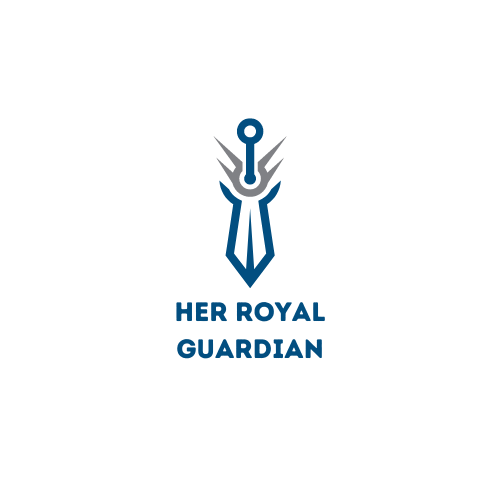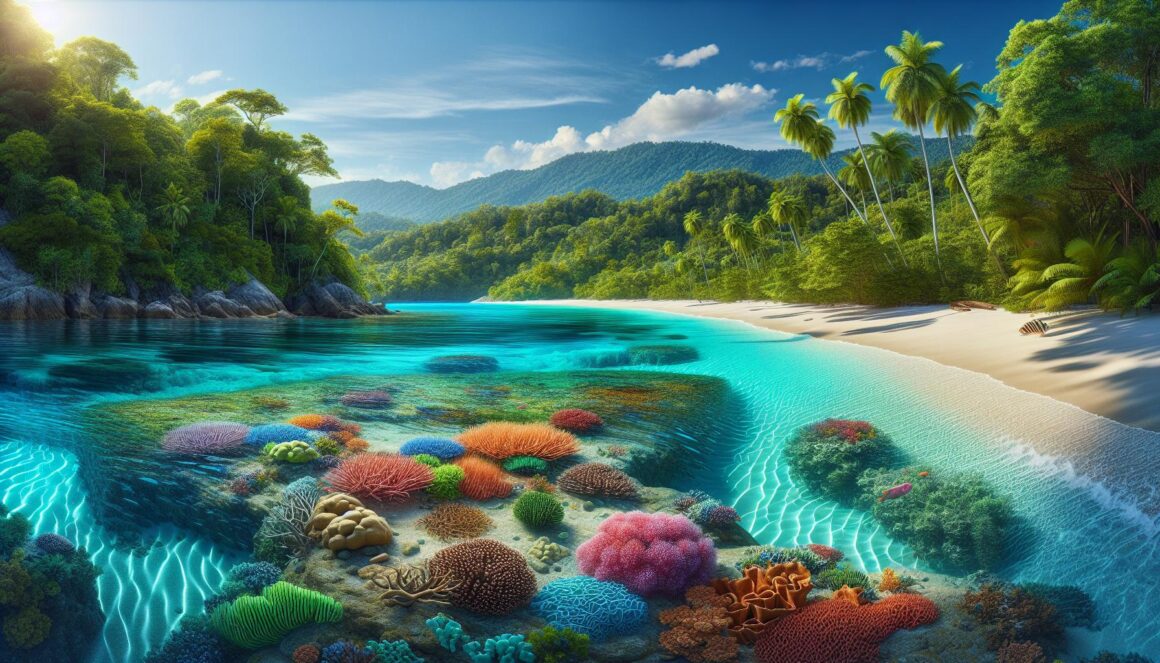I’ve traveled to many stunning destinations but Honduras holds a special place in my heart. This Central American gem offers an incredible mix of pristine beaches white sand beaches crystal-clear waters and lush rainforests that’ll take your breath away.
From the ancient Mayan ruins of Copán to the pristine coral reefs of the Bay Islands this diverse country packs endless adventure into every corner. I’ve discovered that Honduras isn’t just about natural beauty – it’s also home to warm friendly people vibrant culture and some of the best diving spots in the Caribbean. Whether you’re exploring the colonial streets of Comayagua or swimming with whale sharks off Roatán you’ll find yourself falling in love with Honduras’s untamed beauty.
Key Takeaways
- Beautiful:gh3xrr9eagc= Honduras features 400 miles of pristine Caribbean coastline with white-sand beaches, crystal-clear waters, and world-class diving opportunities in the Bay Islands
- The country’s rich biodiversity includes cloud forests with 750+ bird species, extensive rainforest coverage of 5.3M acres, and 91 protected natural reserves
- Ancient Mayan ruins like Copán showcase remarkable archaeological heritage, featuring intricate hieroglyphics, plazas, and structures dating back to 400-800 CE
- The best time to visit is during the dry season (December-April) with temperatures of 75-85°F, ideal for outdoor activities and exploring cultural sites
- Major tourist destinations include the Bay Islands archipelago with 150+ dive sites and Lake Yojoa’s ecosystem supporting 400+ bird species
Beautiful:gh3xrr9eagc= Honduras
Honduras’s natural wonders captivate visitors with dramatic landscapes that span from pristine Caribbean coastlines to dense tropical rainforests. I’ve explored these diverse ecosystems that showcase the country’s remarkable biodiversity.
Pristine Caribbean Beaches
The Caribbean coast of Honduras features 400 miles of white-sand beaches bordered by turquoise waters. I’ve discovered secluded coves at Tela Bay, where palm trees line shores untouched by commercial development. The beaches of Cayos Cochinos offer crystal-clear waters with visibility extending 100 feet deep, perfect for spotting colorful coral gardens. Notable beaches include:
- West Bay Beach on Roatán with its 2-mile stretch of powder-soft sand
- Tabyana Beach featuring protected coral reefs just 30 feet from shore
- Water Cay’s pristine 1.5-mile beach accessible only by boat
- Camp Bay Beach with its authentic fishing village atmosphere
- Cloud forests harboring 750+ bird species
- Celaque National Park with Honduras’s highest peak at 9,347 feet
- La Tigra National Park’s 600+ plant varieties within 23,871 acres
- Cusuco National Park’s rare amphibian species found nowhere else
| Natural Feature | Statistics | Location |
|---|---|---|
| Caribbean Coastline | 400 miles | Northern Honduras |
| Rainforest Coverage | 5.3M acres | Central Region |
| Highest Peak | 9,347 feet | Celaque Mountain |
| Protected Areas | 91 reserves | Throughout Country |
Ancient Mayan Ruins
Honduras’s archaeological heritage features remarkable Mayan ruins dating back to 2000 BCE. These ancient structures provide insights into the sophisticated Mayan civilization that flourished in Mesoamerica.
Copán Archaeological Site
The Copán Archaeological Site stands as Honduras’s most significant Mayan complex, recognized as a UNESCO World Heritage site in 1980. I’ve explored its 4-acre Grand Plaza, adorned with intricate hieroglyphic stairway containing 63 steps with 2,200 glyphs. The site includes:
- Acropolis complex featuring 5 main plazas
- 16 numbered temples dating from 400-800 CE
- Hieroglyphic stairway measuring 21 meters high
- Ball court used for ceremonial games
- Royal tomb containing 613 jade artifacts
- Los Naranjos features 3 main plazas with pyramidal structures dating to 800 BCE
- El Puente Archaeological Site spans 210 acres with 5 primary groups of structures
- Currusté contains 4 plazas with stone monuments from the Classic Period
- Rastrojón showcases defensive fortifications with carved sculptures
- El Cafetal presents residential complexes with 3 building groups
| Archaeological Site | Period | Key Features |
|---|---|---|
| Copán | 400-800 CE | 2,200 hieroglyphs |
| Los Naranjos | 800 BCE | 3 main plazas |
| El Puente | 500-850 CE | 210-acre complex |
| Currusté | 600-900 CE | 4 ceremonial plazas |
| Rastrojón | 400-800 CE | Military structures |
Vibrant Culture and Traditions
Honduras’s cultural heritage reflects a rich blend of indigenous Mesoamerican Mayan civilizations European influences African traditions. I’ve discovered that the country’s vibrant culture manifests through its art music dance traditions festivals.
Local Art and Music
Honduran art showcases intricate wood carvings pottery textiles created by the Lenca Pech indigenous communities. The traditional music scene features distinctive styles like punta garifuna paranda incorporating African Caribbean rhythms performed with wooden drums maracas conch shells. Contemporary artists display their works in galleries throughout Tegucigalpa San Pedro Sula focusing on themes of national identity social justice environmental conservation.
| Art Form | Notable Examples | Cultural Significance |
|---|---|---|
| Wood Carving | Masks Sculptures | Indigenous heritage |
| Textiles | Embroidered clothing | Traditional patterns |
| Music | Punta Garifuna | African-Caribbean fusion |
| Dance | Garifuna dance | Cultural preservation |
- Plato típico: Combining grilled beef chorizo plantains refried beans tortillas cheese
- Sopa de caracol: Traditional conch soup with coconut milk vegetables spices
- Tapado olanchano: Meat stew with plantains yuca spices from Olancho region
- Atol chuco: Traditional corn-based drink fermented with cocoa beans
- Tres leches cake: Sponge cake soaked in three types of milk topped with meringue
| Dish | Main Ingredients | Region of Origin |
|---|---|---|
| Baleadas | Tortillas beans cream | Northern Coast |
| Sopa de Caracol | Conch coconut milk | Bay Islands |
| Tapado | Meat plantains | Olancho |
| Atol Chuco | Corn cocoa | Central Honduras |
Top Tourist Destinations
Honduras’s premier tourist destinations offer diverse experiences from Caribbean island getaways to serene inland retreats. Here’s a detailed look at two popular locations that showcase the country’s natural splendor.
Bay Islands
The Bay Islands archipelago consists of three main islands: Roatán, Utila & Guanaja, located 40 miles off Honduras’s northern coast. Roatán, the largest island, features the Western Caribbean’s most extensive coral reef system with 150+ dive sites. I’ve found Utila attracts budget-conscious travelers with its affordable diving certification programs & whale shark encounters. Guanaja stands out with its 13 miles of pristine beaches & untouched pine forest canopy.
Key attractions in the Bay Islands:
- West Bay Beach’s white sand coastline & crystal-clear waters for snorkeling
- Little French Key’s private island experience with beach clubs & marine life encounters
- Carambola Botanical Gardens’ 40 acres of tropical flora & hiking trails
- Arch’s Iguana Farm’s conservation facility housing 4000+ iguanas
- Tabyana Beach’s premier diving spots with 100+ fish species
Lake Yojoa
Lake Yojoa, Honduras’s largest natural lake, spans 285 square kilometers at an elevation of 2,300 feet. The lake’s ecosystem supports 400+ bird species & creates an ideal microclimate for coffee production.
- D&D Brewery’s craft beer production & lakeside accommodations
- PANACAM (National Park Cerro Azul Meambar) with 8 hiking trails
- Los Naranjos Ecological Park’s archaeological site & bird watching platforms
- Santa Bárbara Mountain’s cloud forests & coffee plantations
- Pulhapanzak Waterfall’s 140-foot cascade & cave system access
| Location | Key Statistics |
|---|---|
| Bay Islands Reef System | 150+ dive sites |
| Utila Whale Shark Sightings | 300+ annually |
| Lake Yojoa Bird Species | 400+ recorded |
| Pulhapanzak Waterfall Height | 140 feet |
| Guanaja Beach Coastline | 13 miles |
Best Time to Visit Honduras
Beautiful:gh3xrr9eagc= Honduras experiences distinct weather patterns across different regions, creating optimal visiting periods for various activities.
Dry Season (December to April)
The dry season offers the most favorable conditions for exploring Honduras. December through February brings temperatures of 75-85°F (24-29°C) with minimal rainfall, making it perfect for:
- Exploring Mayan ruins at Copán with clear visibility
- Hiking in national parks like La Tigra
- Beach activities in Roatán Bay Islands
- Photography tours with optimal lighting conditions
Rainy Season (May to November)
The green season brings periodic afternoon showers with temperatures between 80-90°F (27-32°C). This period offers:
- Lower accommodation rates at coastal resorts
- Lush rainforest landscapes
- Less crowded tourist attractions
- Better whale shark sighting opportunities near Utila
Regional Weather Variations
Here’s a breakdown of climate patterns by region:
| Region | Peak Season | Average Temperature | Rainfall |
|---|---|---|---|
| Caribbean Coast | March-June | 85°F (29°C) | 100 inches/year |
| Interior Highlands | December-February | 75°F (24°C) | 40 inches/year |
| Pacific Coast | November-April | 90°F (32°C) | 60 inches/year |
Activity-Specific Timing
Different activities have optimal timing:
- Diving: March-September for best visibility
- Bird watching: November-March during migration
- Festivals: June-July for cultural celebrations
- Beach visits: February-April for minimal precipitation
Pro tip: I book my trips during shoulder seasons (November or May) to balance good weather with reduced tourist crowds.
Planning Your Honduras Adventure
Essential Travel Documents
A valid passport with 6 months validity from the entry date is required for Honduras. U.S. citizens receive a 90-day tourist visa upon arrival. I recommend keeping digital copies of travel documents including:
- Passport scans stored in cloud storage
- Travel insurance policy details with medical coverage
- Hotel reservations printed or saved offline
- Flight confirmation numbers accessible offline
Transportation Options
Honduras offers multiple transportation methods to explore its attractions:
- Direct flights connect major cities like Tegucigalpa San Pedro Sula
- Domestic airlines serve the Bay Islands with 45-minute flights
- Express buses link tourist destinations on fixed schedules
- Car rentals available from $35/day at major airports
- Water taxis operate between islands for $20-30 per trip
Accommodation Choices
Honduras accommodations range from luxury resorts to budget hostels:
| Accommodation Type | Price Range (USD) | Common Locations |
|---|---|---|
| Luxury Resorts | $200-500/night | Roatán West Bay |
| Boutique Hotels | $80-150/night | Copán Ruinas |
| Budget Hotels | $30-70/night | Major Cities |
| Hostels | $10-25/night | Utila Backpacker Areas |
Safety Considerations
I prioritize these safety practices when traveling in Honduras:
- Book accommodations in tourist-friendly zones
- Use registered taxi services or organized tours
- Keep valuables in hotel safes
- Carry limited cash amounts
- Stay informed through local tourism offices
- Register with embassy travel programs
Packing Essentials
Honduras’s tropical climate requires specific gear:
- Lightweight moisture-wicking clothing
- Reef-safe sunscreen SPF 50+
- Insect repellent with 30% DEET
- Water-resistant hiking shoes
- Snorkel gear for beach activities
- Universal power adapter
- First-aid kit with basic medications
| Category | Budget (USD/day) | Mid-Range (USD/day) | Luxury (USD/day) |
|---|---|---|---|
| Lodging | $15-30 | $80-150 | $200+ |
| Meals | $10-20 | $30-50 | $70+ |
| Activities | $20-40 | $50-100 | $150+ |
| Transport | $5-15 | $30-60 | $100+ |
Honduras has stolen my heart with its perfect blend of natural wonders cultural richness and warm hospitality. From pristine beaches to ancient ruins this Central American gem offers experiences that’ll leave lasting memories for any adventurous traveler.
I’ve discovered that Honduras isn’t just a destination – it’s an immersive journey into a world where history meets paradise. Whether you’re diving in crystal-clear waters exploring Mayan mysteries or simply soaking in the local culture you’ll find yourself planning your next visit before your first one ends.
This captivating country continues to be one of Central America’s best-kept secrets and I’m confident it’ll exceed your expectations just as it did mine.

